Tracking Down Australia’s Largest Ever Terrestrial Predator
Scientists from the University of Queensland have conducted a review of the data associated with a series of Jurassic-aged theropod dinosaur prints preserved on the ceilings of coal mine galleries deep underground. They conclude that some of these prints represent predatory dinosaurs around ten metres in length, making these trace fossils evidence of the largest terrestrial carnivores ever to have lived in Australia.
A Life Reconstruction of a Large Carnosaur Compared to a Person and a Silhouette of Tyrannosaurus rex
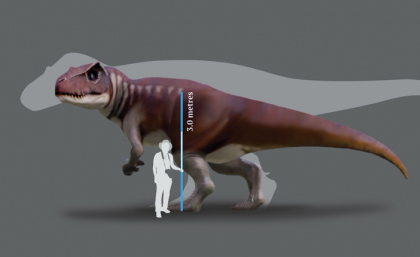
Picture credit: Dr Anthony Romilio et al (University of Queensland)
Australia’s Big Carnivorous Dinosaurs
Dinosaur tracks from the coal-mines from Rosewood near Ipswich, and Oakey just north of Toowoomba in southern Queensland have been known about for decades. The prints and trackways are located in sediments directly above coal seams and give the impression of dinosaurs defying gravity by walking on the ceiling. The explanation for the trace fossils is rather more mundane but still quite remarkable when the age of these tracks (estimated at around 151 to 161 million years old) is considered.
Large Theropods (Carnosauria) Left the Prints When Walking Across Swampy Ground
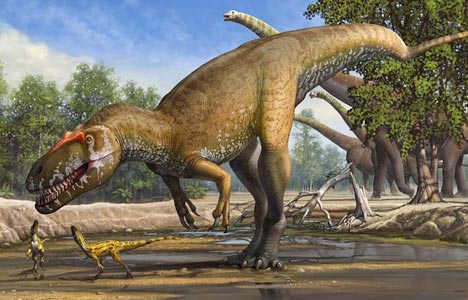
Picture credit: Sergey Krasovskiy
How Were These Trace Fossils Formed?
Tridactyl prints made by theropod dinosaurs onto mats of compressed swamp-vegetation became covered with silt, mud and sand from flood-water. Over millions of years the remains of the swamp vegetation became compressed and turned into coal, which was then excavated by Australian miners deep underground during the 19th and 20th centuries. As the coal seams were removed, these left exposed on the ceiling of the mine galleries, the inlaid 160 million-year-old dinosaur tracks.
Many of the mines exploiting the Walloon Coal Measures from the Clarence-Morton Basin have been closed, with their access shafts filled in. Access to many of these prints in the mines is no longer possible, so the researchers relied on previous research and unpublished archival photographs from which they were able to create three-dimensional images of some of the individual prints.
Photograph and False-Colour 3-D Map of a Tridactyl Print from the Oakey Coal Mine
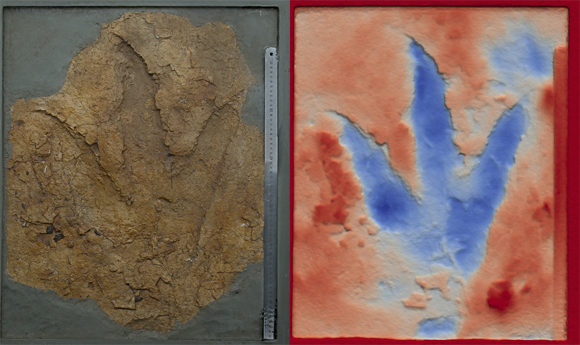
Picture credit: Dr Anthony Romilio et al (University of Queensland)
The three-toed (tridactyl), prints with claw marks, typical of theropod dinosaurs, dominate the tracksites. The size of the prints varies, most of the prints measure between 30 to 50 cm long. However, a number of trace fossils from the eleven track-bearing sites analysed in this study, are much bigger. The largest measures 79 cm in length, the biggest carnivorous dinosaur footprint discovered to date in Australia.
Footprint size can be used to calculate an approximate hip-height of the theropod dinosaur that made the track. Once a hip-height has been estimated, then palaeontologists can quickly work out just how big that dinosaur actually was.
Lead author of the research, published in Historical Biology, Dr Dr Anthony Romilio explained:
“Most of these footprints are around 50 to 60 centimetres in length, with some of the really huge tracks measuring nearly 80 centimetres. We estimate these tracks were made by large-bodied carnivorous dinosaurs, some of which were up to three metres high at the hips and probably around 10 metres long. To put that into perspective, T. rex got to about 3.25 metres at the hips and attained lengths of 12 to 13 metres long, but it didn’t appear until 90 million years after our Queensland giants.”
Examining the Theropod Prints from the Walloon Coal Measures
Picture credit: Dr Anthony Romilio et al (University of Queensland)
Intriguingly, all the tracksites studied are dominated by the three-toed prints of theropods. These theropod dominated trace fossil assemblages are unique among Australian dinosaur tracksites. In the absence of any contemporaneous dinosaur body-fossils, these prints and tracks preserved on the ceilings of the coal mines provide palaeontologists with important data helping them to fill in gaps about the composition of Middle and Late Jurassic Australian dinosaur fauna.
What Type of Meat-eating Dinosaur Made the Tracks?
The strata in which the tracks are preserved span around ten million years or so (Callovian to Tithonian faunal stages of the Jurassic). Palaeontologists are aware that during this time there was a change in the types of large, carnivorous dinosaurs that dominated terrestrial ecosystems. The fossil record, although far from complete, suggests a decline in the Megalosauroidea during the Middle Jurassic and the rise to prominence of the Avetheropoda clade consisting of the Allosauroidea and the Coelurosauria.
A Faunal Turnover in Theropod Dinosaurs During the Jurassic
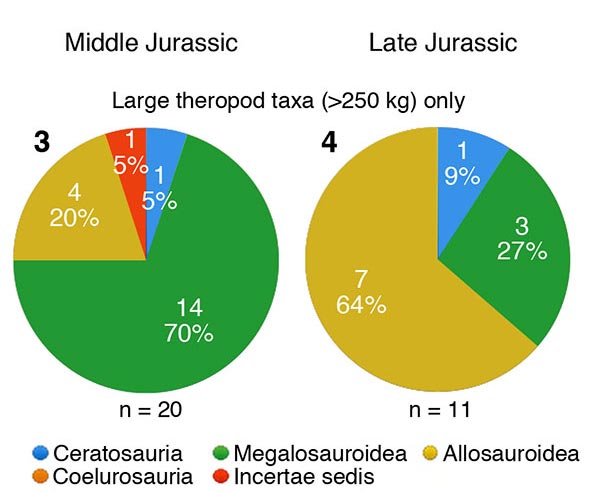
Picture credit: Palaeontologica Electronica
However, the taxonomy of the Theropoda, even at the superfamily level is controversial and open to debate. For example, the Carnosauria clade had been redefined, constraining it to the allosaurs and their closest relatives. In 2019, a new basal allosauroid from the Middle Jurassic of Argentina was described Asfaltovenator (A. vialidadi). Asfaltovenator had a combination of primitive and more derived anatomical features. As a result, a new phylogenetic analysis extended the Carnosauria clade to once again include the Megalosauroidea.
A Life Reconstruction of Asfaltovenator from the Middle Jurassic of Argentina
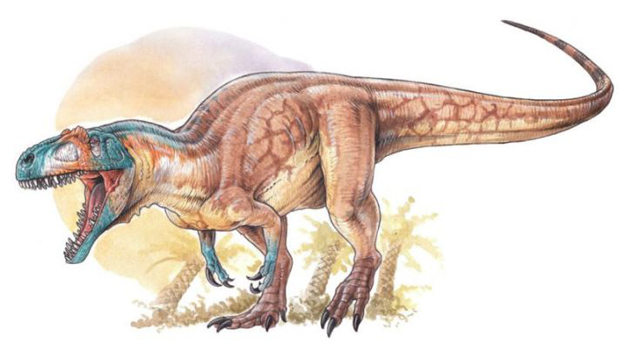
Picture credit: Gabriel Lio/Conicet
In short, the researchers are uncertain as to what types of meat-eating dinosaur left the prints. In the absence of any other fossil evidence, we shall probably never know.
To read a related article examining three-toed tracks from the ceiling of the Australian Mount Morgan caves complex preserved in Lower Jurassic deposits: Mystery of Dinosaur Prints on Cave Ceiling Solved.
The scientific paper: “Footprints of large theropod dinosaurs in the Middle–Upper Jurassic (lower Callovian–lower Tithonian) Walloon Coal Measures of southern Queensland, Australia” by Anthony Romilio, Steven W. Salisbury and Andréas Jannel published in Historical Biology.
The Everything Dinosaur website: Everything Dinosaur.


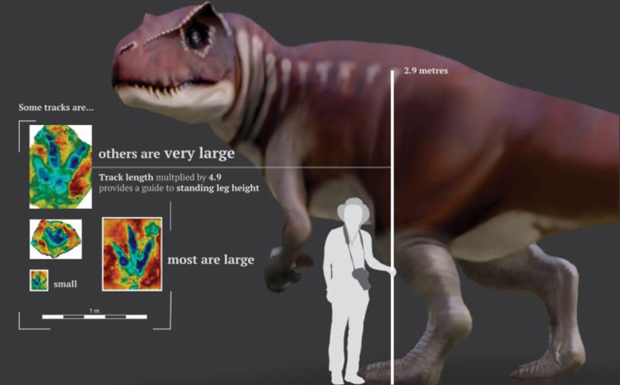




Leave A Comment